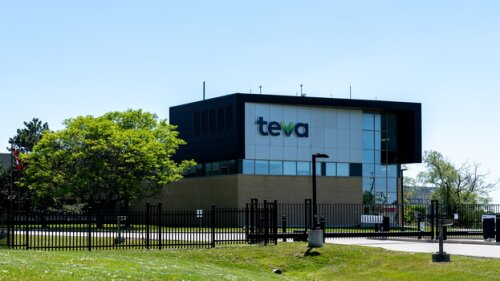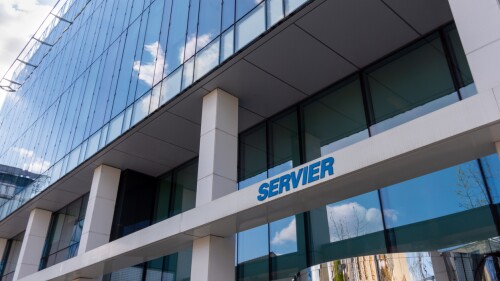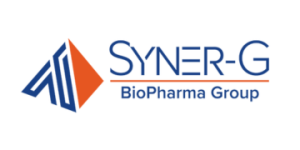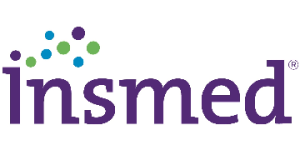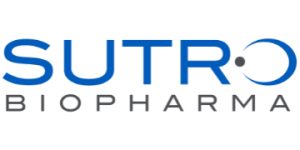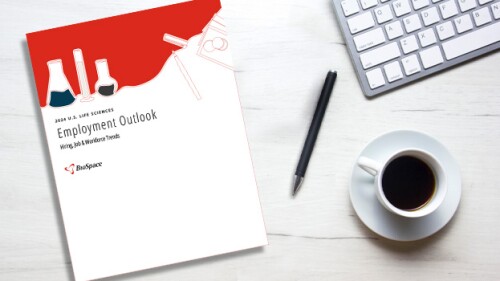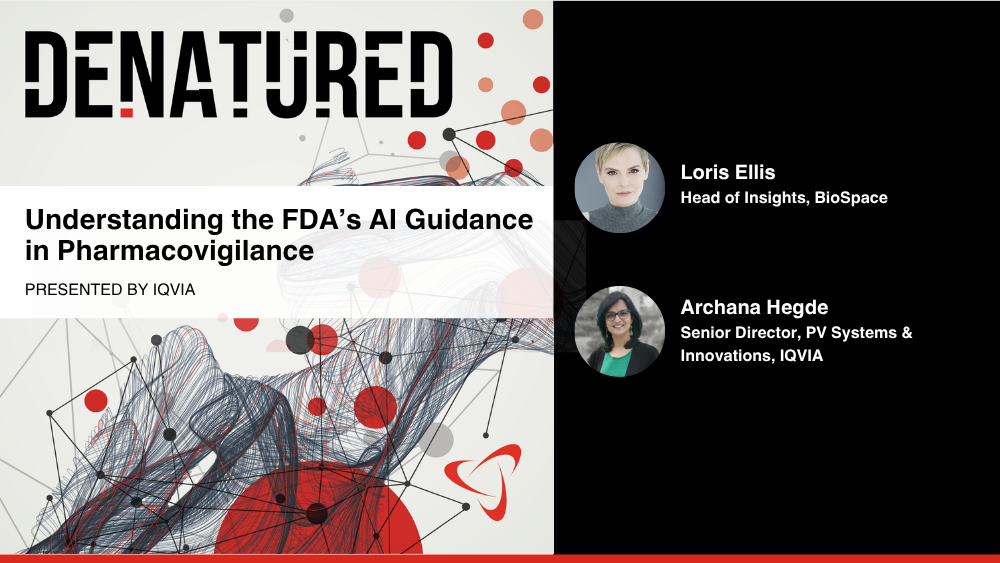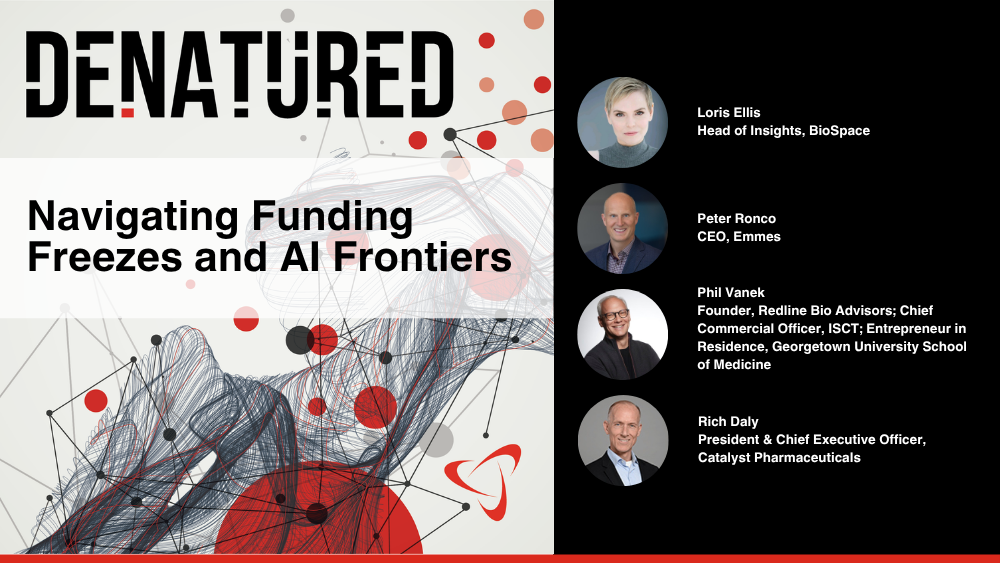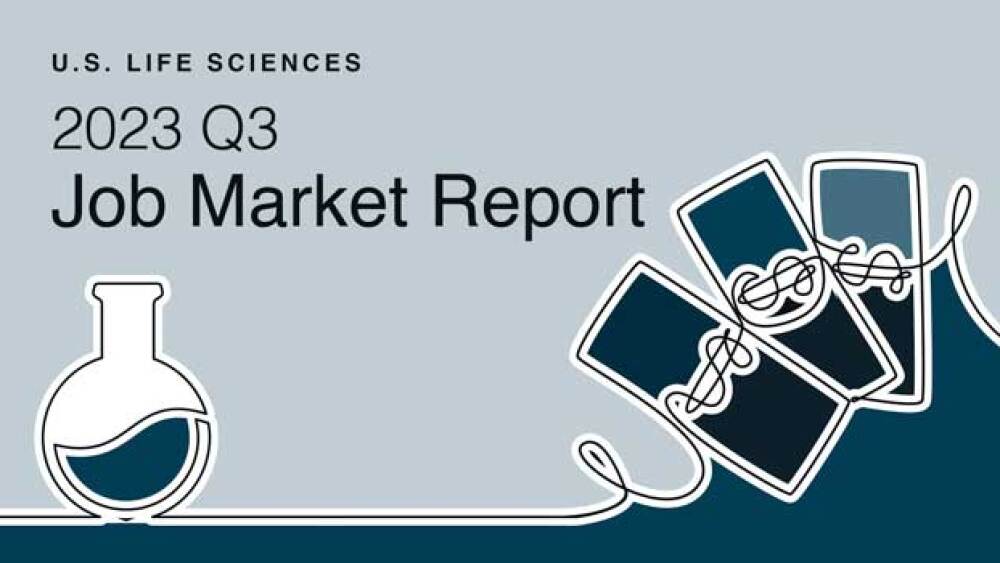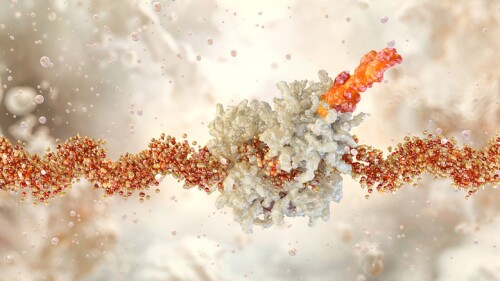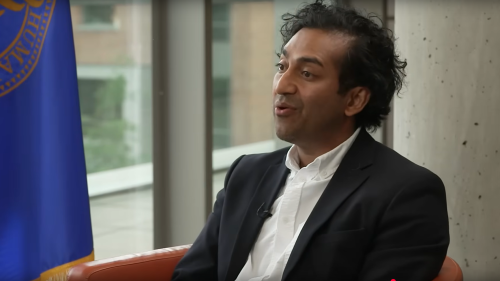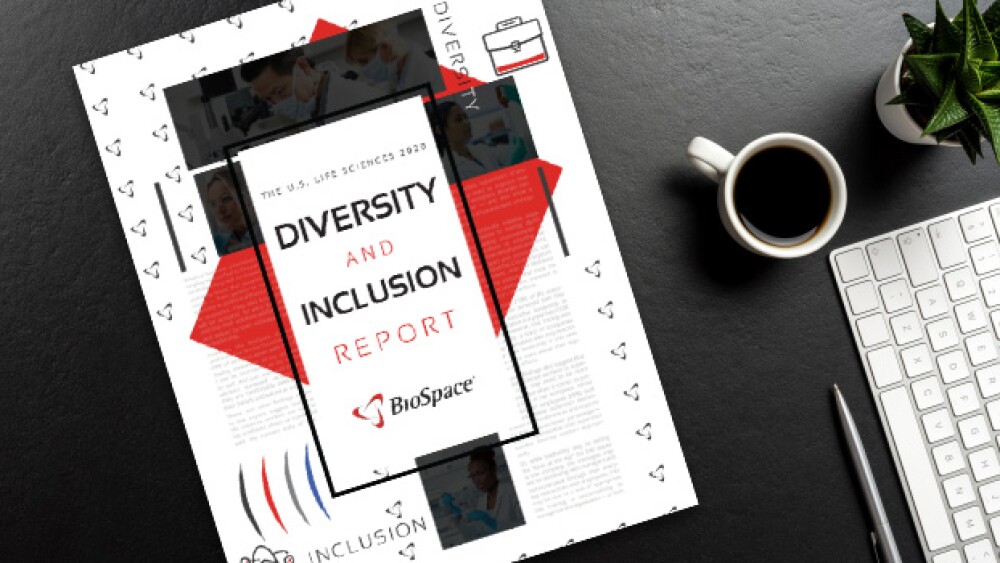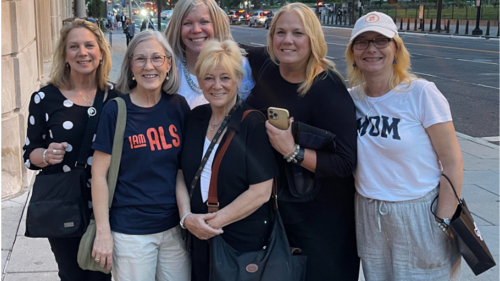Health Secretary Robert F. Kennedy Jr. will appear before the Senate Finance Committee Thursday, ahead of a vaccine advisory committee meeting later in September. Meanwhile, deal-making appetite appears healthy, and the weight loss space continues generating clinical data and other news.
Paul Offit, longtime member of the FDA’s vaccine advisory committee and an outspoken critic of Health Secretary Robert F. Kennedy Jr., was recently informed by the Department of Health and Human Services that his services are no longer required.
Vertex Pharmaceuticals commits $45 million upfront to leverage Enlaza Therapeutics’ War-Lock platform to create drug conjugates and T cell engagers for autoimmune diseases and gentler conditioning for sickle cell/beta thalassemia gene-editing therapy Casgevy.
The French giant is gaining access to darovasertib, a small molecule protein kinase C inhibitor already in Phase II/III trials, with rights for the whole world besides the U.S.
Novartis is licensing ARO-SNCA, a preclinical siRNA therapy for synucleinopathies, a group of neurodegenerative disorders including Parkinson’s disease.
The OMass partnership will boost Roche’s strategy in inflammatory bowel diseases, currently led by afimkibart, an anti-TL1A therapy the pharma obtained from its $7.1 billion acquisition of Telavant in 2023.
FEATURED STORIES
Out-licensing drugs to multinational corporations is a natural step for Chinese biotechs, but the recent rise in deals is only scratching at the surface of partnership-ready biotechs in the region.
While a substantial portion of pipeline assets are externally sourced, many Big Pharmas are tapping into incubators and venture funds to uncover cutting-edge scientific trends, determine their future focus points and even carve out a niche in an emerging geographical hotspot.
From innovation in manufacturing to more-flexible regulation and better communication with payers, much needs to happen to make CGTs commercially viable. But it is possible, experts agreed at a recent panel.
The primary focus in scaling up production should first be the adoption of lean manufacturing principles used in virtually every other industry.
After decades of limited progress—owing to the difficulty of treating the disease and resultant market risk—glioblastoma research is entering a new phase spurred by smarter trials, targeted funding and renewed interest from companies like Merck and Jazz Pharmaceuticals.
Sarepta and Capricor learned of key regulatory decisions from the media and investors, and Duchenne muscular dystrophy families have turned to the news for answers. Meanwhile, the FDA insists it remains committed to notifying companies of any regulatory action before sharing information with the media or public.
FROM BIOSPACE INSIGHTS
Politics aside, both the government and the pharmaceutical industry want to bring affordable effective therapies to patients. Implementation is the obstacle. Working together is the only way to modify the IRA to do what it intends to do: benefit patients.
LATEST PODCASTS
In this episode presented by IQVIA, BioSpace’s head of insights Lori Ellis discusses the FDA’s first draft guidance for AI in drug development, published in January 2025, with Archana Hegde, senior director, pv systems and innovations at IQVIA.
Robert F. Kennedy Jr. testified in front of largely combative congresspeople on vaccine policy, his MAHA report and more; the mass leadership exodus at the FDA continues as CDER and CBER shed key staff; Kennedy’s revamped CDC vaccine advisors convene for their first meeting; Novo and Lilly present new data at the American Diabetes Association’s annual meeting; and BioSpace recaps BIO2025.
In this episode of Denatured, BioSpace’s Head of Insights Lori Ellis discusses key themes from BIO and DIA, including the funding environment, with Rich Daly, CEO of Catalyst Pharmaceuticals, Peter Ronco, CEO of Emmes Corporation, and Phil Vanek, founder of Redline Bio Advisors.
Job Trends
Roche’s reorganization of Spark Therapeutics is coming more into focus, with nearly 300 employees being let go by the end of this year. Spark also trimmed its staff in 2024.
Subscribe to Genepool
Subscribe to BioSpace’s flagship publication including top headlines, special editions and life sciences’ most important breaking news
SPECIAL EDITIONS
In this deep dive, BioSpace examines how small, medium and large companies are using artificial intelligence and machine learning to enhance their drug discovery efforts.
In this job market report we’re reviewing life sciences job market movement in Q3 and what to expect for Q4 and beyond.
In this special report, BioSpace examines how the biopharma industry is grappling with impending consequences of the Inflation Reduction Act.
DEALS
-
Stifel analysts said the deal “feels like an unremarkable outcome for a company that was once one of the hottest stories in CNS.” Supernus’ offer beats Biogen’s unsolicited bid of about $7.22 per share, which arrived with a thud in late January.
-
BioNTech will get CureVac’s early-stage cancer assets, including its mRNA-based glioblastoma therapy currently in Phase I development. CureVac had previously sued BioNTech for copyright infringement related to mRNA vaccine technology.
-
Instead of homing in on PSMA—currently the most validated target in prostate cancer—BMS and Philochem will instead collaborate on an early-stage molecule that binds to a novel marker called ACP3.
-
The deal is Lilly’s second obesity tie-up in a week, after sinking up to $870 million into an agreement with Camurus to develop long-acting versions of molecules against GLP-1 and other incretins.
-
Looking at licensing deals struck in the past 10 years, Jefferies found that many Big Pharmas do not ultimately follow through with M&A after earning a right of first negotiation. Sanofi, on the other hand, almost always does, as it did with Vigil recently.
WEIGHT LOSS
-
Analysts said the deal with Novo was likely giving Hims “‘credibility’ or increased consumer traffic,” adding that the “litigation risk is back on the table” now that the Danish pharma has stepped away.
-
After a season of regulatory upheaval, obesity and rare genetic diseases will likely remain major themes for biopharma in 2025, according to Jefferies.
-
With PN-477, Protagonist is directly going up against Eli Lilly, which is advancing retatrutide, also a triple-G agonist, in a Phase II trial.
-
Altimmune’s pemvidutide failed to significantly improve fibrosis in MASH patients in a Phase IIb study. The biotech crashed 53% in the aftermath of the readout.
-
In the race to make the most tolerable obesity drug, there seems to be no clear winner—at least not according to analysts parsing the data presented at the American Diabetes Association annual meeting this week.
POLICY
-
The Annals of Internal Medicine ran a large-scale study in July, pointing to the lack of an association between childhood aluminum exposure through vaccination and chronic conditions. The Health Secretary, in an opinion piece earlier this month, called the paper a “ballyhooed study.”
-
Gray Delany’s ouster comes days after Health Secretary Robert F. Kennedy Jr. controversially axed 22 mRNA vaccine contracts under the Biomedical Advanced Research and Development Authority.
-
Skysona can now only be used in patients with cerebral adrenoleukodystrophy who have no available treatment alternatives or stem cell donors.
-
The recent announcement of RFK Jr.’s termination of mRNA vaccine contracts is the latest effort to undermine this promising technology at the federal level. Pharmaceutical companies and private investors must fill the gap and ensure that research into this critical resource continues.
-
After exiting the FDA less than two weeks ago for unclear reasons, Vinay Prasad is once again director of the Center for Biologics Evaluation and Research, HHS confirmed to several outlets Saturday.
Managers face a variety of challenges during their careers. Instead of falling into fight or flight, develop resilience to navigate the uncertain moments that pop up from time to time.
In our comprehensive guide to salary negotiation, we’ll teach you what a market salary is, how to research a market value salary and, ultimately, how to negotiate your salary according to market value.
During the job application and interview process, candidates who lie to prospective employers and those who don’t properly highlight their accomplishments can find it difficult to land—or keep—their next role. We asked experts how to sell yourself positively and honestly.
Dealing with a toxic co-worker can be exhausting, and it can make your workplace more stressful. There are a few ways to make it easier, including developing healthy coping mechanisms and even talking it out with your colleague.
Job security is a hot topic among biopharma professionals. A career coach offers advice for how to evaluate and build it up and what to do if that evaluation leaves you worried.
Good company culture is a crucial aspect of professional life. Look at these 11 important indications of good workplace culture before accepting a job offer or use them to evaluate your new employer.
HOTBEDS
REPORTS
If people are your greatest asset, it is imperative that your organization maintains a positive employer brand presence and talent pipeline. This report covers how you can build a strong employer brand with prospective employees, current employees - and former employees.
In challenging conditions, how can employers optimize the employee experience to retain their top talent and make the most of their current teams?
In the 2020 US Life Sciences Diversity & Inclusion report, BioSpace dives into how different segments of employees experience and perceive policies, attitudes and actions. Our data suggests that there are significant disparities between segments.
CANCER
-
The panelists flagged safety concerns with Blenrep and GSK’s failure to optimize its dosing regimen for the antibody-drug conjugate in multiple myeloma.
-
Johnson & Johnson’s $23.7 billion in second-quarter earnings, driven by cancer and neuroscience drugs, exceeded analyst expectations, while CEO Joaquin Duato set a target of $50 billion in oncology sales by 2030.
-
In advance of this week’s adcomm, the FDA flags ocular toxicities associated with the antibody-drug conjugate, which received accelerated approval in August 2020 but was pulled from the market two years later after a confirmatory trial failed to improve progression-free survival.
-
Shanghai-based LaNova Medicines—which has captured the attention of some of the biggest Western pharmas—will be folded into fellow Chinese company Sino Biopharmaceutical in a deal worth up to $951 million.
-
Only with the adoption of digital imaging and AI-powered analysis will next-generation precision oncology therapies reach their full potential and ensure no eligible patient is overlooked.
NEUROSCIENCE
-
Otsuka and Lundbeck’s data are insufficient to establish significant efficacy of Rexulti plus sertraline in PTSD, according to the FDA’s outside experts.
-
The patient, who was being treated with an investigational gene therapy for limb-girdle muscular dystrophy, died of acute liver failure, the same complication responsible for the deaths of two boys taking Sarepta’s Duchenne muscular dystrophy treatment Elevidys.
-
FDA reviewers flag “discordant results” in a briefing document published ahead of Friday’s advisory committee meeting for the partners’ application for the antipsychotic in post-traumatic stress disorder.
-
Participants in trials of BrainStorm Cell Therapeutics’ NurOwn filed a Citizens’ Petition with the FDA earlier this month seeking a new review of the stem cell therapy that was rejected in 2022 based on real-world data and 90% survival in an expanded access program.
-
Around 3,500 FDA employees received termination emails; FDA Commissioner Marty Makary suggests lowering industry user fees and tying review times to drug prices; the regulator opens its trove of complete response letters in the name of transparency; and two companies receive rejections for rare disease therapies.
CELL AND GENE THERAPY
-
Changing how biopharmas package their products, how regulators review new drugs and how mutated genes are fixed could make ultrarare disease treatments possible.
-
Jefferies analysts called the proxy filing, which is a standard disclosure after a merger agreement, “much more intriguing than normal” given the regulatory turmoil it revealed.
-
The FDA is assessing the need for “further regulatory action” on Sarepta’s Duchenne muscular dystrophy gene therapy in the aftermath of two patient deaths, though the regulator has not yet specified what action this could be.
-
Robert F. Kennedy Jr. testified in front of largely combative congresspeople on vaccine policy, his MAHA report and more; the mass leadership exodus at the FDA continues as CDER and CBER shed key staff; Kennedy’s revamped CDC vaccine advisors convene for their first meeting; Novo and Lilly present new data at the American Diabetes Association’s annual meeting; and BioSpace recaps BIO2025.
-
Isaralgagene civaparvovec is a “potential best-in-class gene therapy for Fabry disease,” according to analysts at H.C. Wainwright. Sangamo plans to use pivotal Phase I/II data to build an accelerated approval case for the asset.



